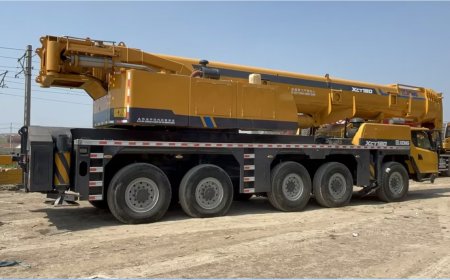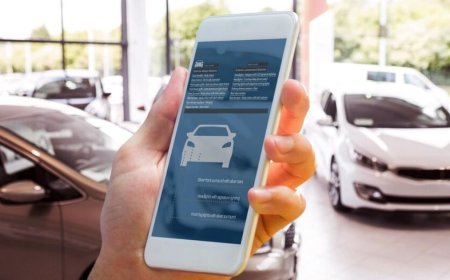How to use Memphis public transit
How to Use Memphis Public Transit Memphis, Tennessee, is a city rich in cultural heritage, musical legacy, and vibrant neighborhoods — yet navigating its urban landscape can be challenging without reliable public transportation. Whether you're a new resident, a visitor exploring the Mississippi Riverfront, a student at the University of Memphis, or a worker commuting from the suburbs, understandin
How to Use Memphis Public Transit
Memphis, Tennessee, is a city rich in cultural heritage, musical legacy, and vibrant neighborhoods — yet navigating its urban landscape can be challenging without reliable public transportation. Whether you're a new resident, a visitor exploring the Mississippi Riverfront, a student at the University of Memphis, or a worker commuting from the suburbs, understanding how to use Memphis public transit opens doors to affordability, sustainability, and independence. Unlike many major cities with expansive rail networks, Memphis relies on a bus-based system operated by the Memphis Area Transit Authority (MATA). While it may not be as extensive as systems in New York or Chicago, MATA provides essential connectivity across Shelby County, linking key destinations such as downtown, medical centers, shopping districts, and educational campuses. This guide offers a comprehensive, step-by-step walkthrough on how to use Memphis public transit effectively, from planning your first ride to mastering real-time tools and avoiding common pitfalls. By the end of this tutorial, you’ll have the confidence and knowledge to navigate Memphis’s transit network with ease — no car required.
Step-by-Step Guide
1. Understand the MATA Network Structure
Memphis public transit operates exclusively through a fleet of fixed-route buses. There is no light rail, subway, or commuter train system. MATA currently runs over 30 bus routes, each designated by a number and often a directional suffix (e.g., Route 1 North, Route 10 East). These routes converge in the downtown area, particularly around the MATA Transit Center located at 201 North Main Street, which serves as the central hub for transfers. Most routes operate Monday through Saturday, with limited service on Sundays and holidays. Some routes, especially those serving major employment or medical zones, run later into the evening.
Before planning your trip, identify whether your origin and destination lie along a direct route or if you’ll need to transfer. Routes like the 1, 10, 12, and 21 serve high-demand corridors such as Poplar Avenue, Elvis Presley Boulevard, and the Medical District. If your journey requires crossing the city from east to west or north to south, you’ll likely need to change buses at the Transit Center or another major intersection.
2. Plan Your Route Using Official Tools
Never rely on memory or guesswork when planning your trip. MATA offers two primary digital tools to help you map your journey: the MATA website and the Transit app.
Visit www.mata.org and navigate to the “Rider Tools” section. Click on “Trip Planner.” Enter your starting address and destination, select your desired departure or arrival time, and choose whether you prefer the fastest route or the fewest transfers. The planner will generate a detailed itinerary including the bus number, pickup location, estimated arrival time, and walking directions to and from stops.
Alternatively, download the free Transit app (available on iOS and Android). This third-party app integrates real-time data from MATA and provides visual maps, push notifications for approaching buses, and alerts if your bus is delayed. It’s especially useful for first-time riders who may be unfamiliar with street names or landmarks. Simply type your destination into the search bar, and the app will display all available transit options with live vehicle tracking.
3. Locate Your Bus Stop
Bus stops in Memphis are marked by standard green-and-white signs with the route number and stop name. Many stops include a shelter, bench, and schedule poster. However, not all stops have shelters — especially in suburban areas — so come prepared for weather conditions.
Use the Trip Planner or Transit app to find the exact stop name and address. For example, if you’re heading to the Memphis Brooks Museum of Art, the app might direct you to “Poplar Ave & Brooks Museum.” Always verify the stop name matches the one listed in your itinerary. Some streets have multiple stops spaced 100–300 feet apart, and boarding at the wrong one can lead to confusion or missed connections.
Important: Buses do not stop automatically. You must signal the driver by extending your arm clearly as the bus approaches. If you’re getting off, pull the yellow cord above the window or press the “Stop Request” button near the door at least one block before your destination. Failure to signal may result in your stop being skipped.
4. Pay Your Fare
MATA offers several payment options, all of which must be paid upon boarding. Cash is accepted, but exact change is required — drivers do not carry change. A single ride costs $1.75. If you plan to ride more than once in a day, consider purchasing a Day Pass for $4.50, which allows unlimited rides on all routes until midnight.
For frequent riders, MATA offers reloadable fare cards called MATA Cards. These plastic cards can be purchased at the MATA Transit Center, select retail locations (including Kroger and Walgreens), or online through the MATA website. Load value onto the card using cash or credit/debit at kiosks or online. Each tap deducts the appropriate fare automatically. MATA Cards also support weekly and monthly passes, which offer significant savings for regular commuters.
Seniors (65+), individuals with qualifying disabilities, and Medicare cardholders ride free with proper identification. Students enrolled in participating schools may qualify for discounted fares — check with your institution’s student services office.
5. Board and Ride
When the bus arrives, wait until passengers disembark before boarding. If you’re using cash, hand the exact fare to the driver as you step on. If you’re using a MATA Card, tap it on the reader located near the front door. The machine will beep and display your remaining balance or pass status.
Find a seat or stand near a handrail. Buses are equipped with priority seating for seniors and individuals with disabilities — please yield these seats if needed. Keep personal belongings secure and avoid blocking aisles or doors. Most buses have bike racks on the front; if you’re bringing a bicycle, secure it before boarding and inform the driver.
During your ride, pay attention to announcements or digital displays that indicate upcoming stops. If your stop isn’t announced, use the Transit app on your phone to track your location. Always be ready to exit — buses may move quickly through neighborhoods, and missing your stop can add significant time to your journey.
6. Transfer Between Routes
Transfers are free and automatically issued when you pay with a MATA Card or Day Pass. If you pay with cash, you must request a paper transfer from the driver before exiting the bus. This transfer is valid for 90 minutes and allows you to board another route without paying again.
When transferring, always head to the MATA Transit Center at 201 North Main Street if possible. It’s the most centralized hub, with clear signage, indoor waiting areas, and real-time departure boards. If you’re transferring elsewhere, check the posted schedule at your stop to confirm the next bus’s arrival time. Some routes run every 15–30 minutes during peak hours, but service may drop to hourly during midday or evenings.
Plan transfers strategically. For example, if you’re traveling from the southern suburbs to the University of Memphis, take Route 12 to the Transit Center, then switch to Route 1 or 10 for a direct ride to campus. Avoid backtracking — always verify your next route’s direction before boarding.
7. Know Service Hours and Limitations
Most MATA routes operate from approximately 5:30 a.m. to 8:00 p.m. Monday through Saturday. Sunday service is limited, with only about 10 routes running, typically from 7:00 a.m. to 6:00 p.m. Holiday schedules vary — check the MATA website for updates on Thanksgiving, Christmas, and New Year’s Day.
Some areas, especially in eastern Shelby County and rural outskirts, have no service at all. MATA does not operate in parts of Germantown, Collierville, or Bartlett — these are served by separate municipal systems. If your destination falls outside MATA’s coverage area, consider paratransit options or ride-sharing services for the last leg of your journey.
8. Use Paratransit for Eligible Riders
MATA provides a complementary paratransit service called MATAplus for individuals with disabilities that prevent them from using fixed-route buses. Eligibility is determined through an application and assessment process. Once approved, riders can schedule trips up to seven days in advance by calling the MATAplus reservation line. Trips must originate and terminate within 3/4 mile of a fixed bus route. MATAplus operates during the same hours as regular service and charges the same fare — $1.75 per trip.
While not a substitute for the fixed-route system, MATAplus fills a critical gap for those with mobility challenges. It’s important to note that this service requires advance planning and cannot be used for spontaneous trips.
Best Practices
1. Always Have a Backup Plan
Public transit systems, even well-run ones, are subject to delays, detours, and mechanical issues. Always have an alternative route or mode of transportation in mind. Keep the Transit app installed and your phone charged. If you’re traveling to an important appointment — such as a job interview or medical visit — allow at least 30–45 minutes extra time to account for unexpected delays.
2. Travel Light and Stay Organized
Carrying large bags, suitcases, or bulky items can make boarding difficult and inconvenience other riders. If you’re carrying groceries, a backpack, or a laptop bag, keep it close and avoid blocking aisles. Use a crossbody bag or backpack with a secure closure to prevent theft — bus stops and vehicles can be targets for opportunistic theft.
3. Be Aware of Safety and Etiquette
Memphis public transit is generally safe, but like any urban transit system, situational awareness matters. Sit near the front of the bus when possible, especially during evening hours. Avoid wearing headphones at high volume so you can hear announcements. Don’t engage with disruptive individuals — notify the driver if you feel unsafe. MATA drivers are trained to handle disturbances and can stop the bus to call for assistance if needed.
Respect priority seating. If someone with a visible disability, cane, or mobility device boards, offer your seat. Avoid loud conversations, music without headphones, or eating strong-smelling food on board.
4. Use Off-Peak Hours When Possible
Peak hours — 7:00–9:30 a.m. and 4:30–6:30 p.m. — are the busiest times on MATA routes. Buses can become overcrowded, and transfers may take longer. If your schedule allows, consider traveling outside these windows. Midday rides are often quieter, and buses are more likely to run on time.
5. Stay Informed About Service Changes
MATA periodically updates routes due to construction, events, or ridership demand. For example, during the annual Memphis in May festival or the FedEx St. Jude Championship, certain downtown streets are closed, and buses are rerouted. Subscribe to MATA’s email alerts or follow their official social media accounts on Facebook and Twitter for real-time updates. Always check the “Service Alerts” section on the MATA website before your trip.
6. Learn Key Landmarks and Street Names
Many bus stops are named after intersections or nearby landmarks rather than formal addresses. Memorizing key cross streets helps you confirm you’re at the right stop. For example:
- “Poplar & Central” = near the Memphis Cook Convention Center
- “Union & 3rd” = near the FedExForum
- “Tennessee & Lamar” = near the University of Memphis
- “Danny Thomas & Elvis Presley” = near St. Jude Children’s Research Hospital
Knowing these landmarks reduces anxiety and helps you orient yourself if you’re unsure where you are.
7. Bring a Physical Backup
While apps are convenient, they require battery life and cellular service. Always carry a printed copy of your route map or write down your bus number, stop name, and schedule. Many older residents and visitors without smartphones rely on paper schedules — there’s no shame in using them.
Tools and Resources
1. MATA Website: www.mata.org
The official website is your most comprehensive resource. It includes downloadable PDF maps of all routes, fare tables, service alerts, and a full schedule archive. The “Rider Resources” section offers downloadable guides for seniors, students, and riders with disabilities. Bookmark this site — it’s updated regularly and contains the most accurate information.
2. Transit App
The Transit app is widely regarded as the most user-friendly third-party tool for Memphis transit. It integrates real-time GPS tracking, trip planning, and service alerts. It works offline once routes are loaded, making it ideal for areas with spotty cellular reception. Download it from the App Store or Google Play.
3. Google Maps
Google Maps includes MATA bus routes and real-time arrival predictions in its transit directions. While not always as accurate as Transit or the MATA Trip Planner, it’s useful for quick checks and multi-modal routing (e.g., combining walking, biking, and bus). Always cross-reference with MATA’s official tools for critical trips.
4. MATA Mobile Website
For users without smartphones, the mobile-optimized version of the MATA website (mata.org/m) provides simplified access to schedules, fare info, and trip planning. It loads quickly on older devices and requires no app installation.
5. Printed Route Maps and Schedules
Physical copies of route maps and timetables are available at the MATA Transit Center, public libraries, community centers, and participating retail locations. These are invaluable for planning trips in advance or for those without digital access. Request a free packet when you visit the Transit Center — they include all 30+ routes in a compact booklet.
6. MATA Customer Feedback Portal
While not a navigation tool, the MATA feedback portal allows riders to report issues like missed stops, broken signage, or unsafe conditions. Your input helps improve service. Visit www.mata.org/feedback to submit a report. All submissions are reviewed and often lead to operational changes.
7. Local Transit Advocacy Groups
Organizations like Memphis Transit Advocates and the Memphis Urban League occasionally host workshops on transit literacy, offer free MATA Cards to low-income residents, and lobby for expanded service. Joining these groups can provide access to exclusive resources, volunteer opportunities, and community updates.
Real Examples
Example 1: Commuting from South Memphis to Downtown for Work
Sarah, a medical assistant, lives in the South Memphis neighborhood and works at the Regional Medical Center (RMC) on Danny Thomas Boulevard. Her daily commute:
- Leaves home at 6:45 a.m.
- Walks 10 minutes to the bus stop at “South 3rd & Beale”
- Boards Route 10 (bound for Downtown) at 7:10 a.m.
- Arrives at “Danny Thomas & RMC” at 7:45 a.m. (35-minute ride)
- Uses a MATA Card loaded with a weekly pass
By using the Transit app, Sarah receives a push notification when her bus is 2 minutes away. She avoids waiting in the rain and arrives on time every day. She often reads or listens to podcasts during the ride, turning her commute into productive downtime.
Example 2: Student Traveling from University of Memphis to the Public Library
Jamal, a sophomore at the University of Memphis, needs to return a book to the Memphis Public Library on Union Avenue. He doesn’t own a car:
- Leaves campus at 3:00 p.m. after class
- Walks to “Tennessee & Lamar” bus stop
- Boards Route 1 North at 3:15 p.m.
- Transfers at MATA Transit Center to Route 8 (bound for Downtown)
- Gets off at “Union & 3rd” at 4:05 p.m.
- Walks 5 minutes to the library
He used the MATA Trip Planner to confirm his transfer time. The app showed a 12-minute wait at the Transit Center — plenty of time to grab a snack from the nearby convenience store. He paid with his student MATA Card, which gives him a 50% discount. Total cost: $0.88. Total time: 65 minutes.
Example 3: Visitor Touring the Mississippi Riverfront
Carol and her husband are visiting Memphis from out of state. They want to see Beale Street, the National Civil Rights Museum, and the Mississippi Riverwalk:
- Check in at their hotel near the airport at 10:00 a.m.
- Take Route 12 to the MATA Transit Center (arrives 11:15 a.m.)
- Transfer to Route 1 North to “Beale & 2nd” (arrives 11:45 a.m.)
- Walk to the Civil Rights Museum (2 blocks)
- After lunch, take Route 1 South to “Riverfront & Beale” (1:30 p.m.)
- Walk along the riverwalk to the Memphis Pyramid
- Return to Transit Center via Route 1 at 5:00 p.m., then Route 12 back to hotel
They purchased two Day Passes for $9 total — far cheaper than a taxi or rideshare for the same day. They used Google Maps for walking directions between stops and the Transit app to track buses. Carol noted: “We felt like locals, not tourists. The bus system was surprisingly efficient.”
Example 4: Senior Citizen Visiting a Doctor’s Appointment
Mr. Thompson, 72, uses MATAplus for his weekly appointment at the VA Medical Center. He’s eligible due to limited mobility:
- Schedules his ride via phone at 8:00 a.m. on Monday
- Driver arrives at his home at 9:15 a.m.
- Arrives at VA Medical Center at 9:50 a.m.
- Return trip scheduled for 1:30 p.m.
- Driver waits 15 minutes after appointment
He pays $1.75 per trip and appreciates the door-to-door service. “I used to rely on my daughter,” he says. “Now I can go alone. It’s given me my independence back.”
FAQs
Can I bring my bicycle on the bus?
Yes. All MATA buses are equipped with front-mounted bike racks that hold up to two bicycles. Load your bike before boarding, secure the wheels in the slots, and inform the driver. Remove your bike when you exit. Bikes are not allowed inside the bus unless they are folded and stored under a seat.
Are service animals allowed on MATA buses?
Yes. Service animals trained to assist individuals with disabilities are permitted on all MATA vehicles. Emotional support animals are not classified as service animals under federal law and may be denied access unless they meet specific criteria.
Can I use a debit or credit card to pay on the bus?
No. Cash and MATA Cards are the only accepted forms of payment at the time of boarding. You can load value onto a MATA Card using credit/debit at kiosks or online, but you cannot tap your card directly on the bus reader.
Do buses run on holidays?
Most routes operate on a Sunday/holiday schedule on major holidays such as New Year’s Day, Memorial Day, Independence Day, Labor Day, Thanksgiving, and Christmas. Check the MATA website for the specific holiday schedule — some routes may not run at all.
Is there Wi-Fi on MATA buses?
No. MATA buses do not currently offer onboard Wi-Fi. However, most urban stops have cellular coverage, so you can use your phone’s data connection to check your route or stream content.
What if I lose something on the bus?
Lost items can be reported to the MATA Transit Center during business hours (7:00 a.m.–6:00 p.m., Monday–Saturday). Call (901) 528-7272 and provide the date, time, route number, and description of the item. Unclaimed items are held for 30 days.
Can I use MATA to get to the airport?
No. MATA does not operate a direct route to Memphis International Airport. The closest stop is “Poplar & Airways,” about 2 miles from the terminal. From there, you can take a rideshare, taxi, or shuttle service. Consider using the airport’s free shuttle from nearby parking lots or hotels.
How often do buses run during peak hours?
On major corridors like Poplar Avenue, Elvis Presley Boulevard, and Union Avenue, buses typically arrive every 15–20 minutes during peak hours (7–9 a.m. and 4–6 p.m.). On less busy routes, service may be every 30–60 minutes. Always check your schedule.
Are MATA buses accessible for wheelchairs?
Yes. All MATA buses are low-floor and equipped with ramps and securement areas for wheelchairs and mobility scooters. Priority seating is available near the front. Drivers are trained to assist with boarding and securing mobility devices.
Can I bring food or drinks on the bus?
Non-alcoholic beverages in sealed containers are permitted. Food is discouraged due to odors and potential mess. Avoid strong-smelling or messy items like fried chicken or hot soups. Always clean up after yourself.
Conclusion
Using Memphis public transit is more than a way to get from point A to point B — it’s a gateway to experiencing the city on its own terms. Whether you’re commuting to work, visiting cultural landmarks, or simply reducing your carbon footprint, MATA provides a practical, affordable, and increasingly reliable option for urban mobility. While the system may not match the scale of larger metropolitan networks, its efficiency, low cost, and community-focused service make it a vital lifeline for thousands of residents.
By following the steps outlined in this guide — planning your route, paying correctly, signaling your stop, and using real-time tools — you eliminate the guesswork and anxiety often associated with public transit. Best practices like carrying a backup plan, respecting fellow riders, and staying informed about service changes will ensure your experience is smooth and stress-free.
As Memphis continues to grow and invest in sustainable infrastructure, the future of public transit looks promising. Expanded routes, improved scheduling, and increased accessibility are on the horizon. Your willingness to use the system helps drive that progress. So the next time you consider driving downtown, take a moment to check the bus schedule. You might just discover that Memphis is easier to navigate — and more enjoyable to explore — without a car.


















